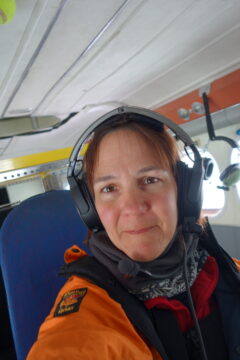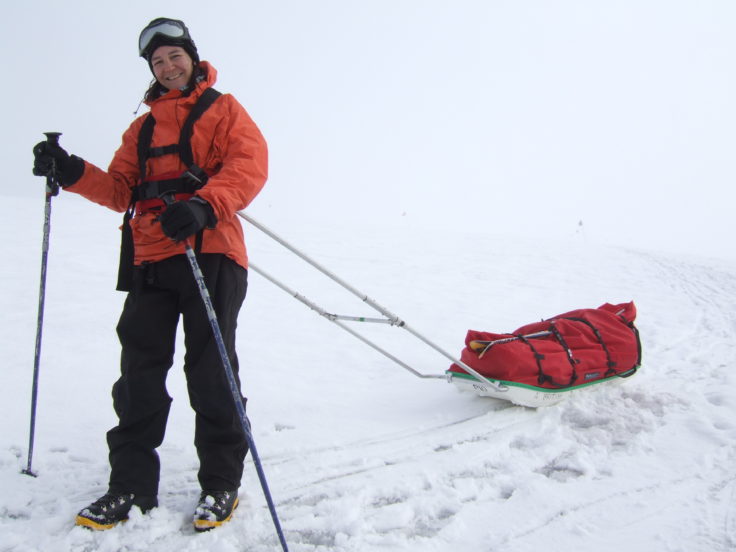Blog: The only woman in seminars
9 February, 2021
British Antarctic Survey scientist Dr Amelié Kirchgaessner shares her journey in polar science for International Day of Women and Girls in Science 2021 (11 Feb).
My name is Amelié Kirchgaessner, and I am a Senior Scientist in the Atmosphere, Ice and Climate Team at the British Antarctic Survey (BAS). I studied for a Diploma in Meteorology at the University of Hamburg, Germany, in a department that focussed at the time on polar sciences. I then did a PhD in Forest Meteorology, investigating how beech trees react to changing climate conditions. After that I got the chance to go back into polar atmospheric sciences, spending time on board research vessels in the Baltic Sea, the North Atlantic and the Arctic Ocean.
Since working for BAS I have carried out extensive fieldwork in the Arctic and the Antarctic. In 2019 I was involved in the largest research expedition in history to the Arctic, when Research Vessel Polarstern was frozen into the sea ice for an entire year. Over the years I have had the privilege to take part in very exciting aircraft measurements in these stunningly beautiful landscapes, investigating the exchange of energy and heat between the ocean and the atmosphere; and questions such as why do form clouds where and when they do, a question that is vital to better restrain climate simulations of the future.

How did I get into Science?
I always enjoyed Maths and Physics, the order of it. I also enjoyed being outside, experiencing the natural environment, the weather, tides …., but also really enjoyed languages, and was also interested in working in the social sector. Even though no one discouraged me, the lack of role models meant that it took me a while to realise that meteorology was really what I wanted to study.
I was often the only woman in seminars, or one of very few. We definitely stood out. Fortunately none of our fellow students, and only a few of the lecturers and professors thought that we shouldn’t be there. In combination with imposter syndrome, though, the lack of role models meant that I never felt sure that this could be my career, my life. At each step I thought, ok, let’s see if I’ll manage to stay in the field for a bit longer, or if this is the point when I would have to change to a more conventional job and career. But, somehow, almost thirty years later, I am still here.
What advice would I give?
The common line is to advise people to do what they are passionate about. In reality this is not always that straight forward. Everyone’s life and circumstances are different. What I have found though, is, that the career paths of many women aren’t straight but meandering. They follow interests, even if they are changing over time; they take opportunities, and see where they may take them. That can sometimes require courage, and a supportive network, be it family, friends or colleagues. Build yourself such a network. And, when looking for a mentor, make sure they are supportive. Whether or not they are world class in their area is not the most important criterion!

What I’m working on at the moment
I am interested in the effect clouds have on how much heat is retained in the Earth’s atmosphere, versus how much heat is reflected back into space. This depends on whether the cloud consists of water droplets, ice crystals or a mix of both. I am creating a method that will allow us to count and analyse ice nucleating particles, which play an important role in the life cycle of clouds, to improve our understanding of this process.
–
This blog was written as part of the UK Research and Innovation, Equality, Diversity and Inclusion initiative for International Day of Women and Girls in Science 2021.